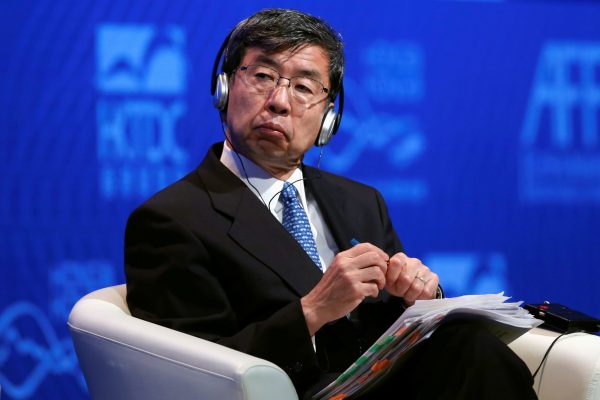ADB President Takehiko Nakao recently signalled a reduction in lending to China in coming years. This happened after Taro Aso, Japanese Finance Minister and ADB Governor, said that China — which absorbed 12 per cent of ADB lending in 2018 — should be put on a path to ‘graduate’ from needing financial aid. Assisting lower income and vulnerable countries, Aso said, should be the bank’s priority.
It is worth noting that Japan ended its bilateral official development assistance (ODA) to China this year, while World Bank President David Malpass last year began calling for an end to World Bank loans to China. Because the United States names the president of the World Bank and Japan names the president of the ADB, the banks appear to be acting in parallel with the two states.
The official explanation is that China no longer needs ODA because it has ample access to international finance on its own. For one, China is spending some US$900 billion over the 2013–2022 decade on its Belt and Road Initiative (BRI). This money will be used to design, finance, construct, and operate infrastructure connectivity between China and some 70 BRI partner countries, forming what China styles a ‘community of common destiny’.
China also leads the new 97-member Asian Infrastructure Investment Bank (AIIB) that has just successfully floated a US$2.5 billion international bond issue to finance AIIB infrastructure projects.
The ADB says Asia needs infrastructure investment of US$26 trillion in 2016–2030 to sustain growth — a figure that would require nearly doubling the current rate of infrastructure investment in developing Asia. Weaning China off concessional loans and grants, the argument goes, would free up scarce ADB resources for far needier countries.
This argument is logical but it is entangled with the seemingly unrelated US–China trade war in ways that will require the ADB and other Indo-Pacific governance mechanisms to walk an ever more delicate path.
The trade war can be traced back to when China joined the WTO on special terms in 2001 as a developing country and non-market economy eligible for special trade preferences and rule exemptions. This gave China WTO benefits without all the obligations associated with membership that developed countries face.
The US Trade Representative argues that, having run out of patience waiting for China to come into reasonable WTO compliance, the United States is using trade war measures to end these privileges and exemptions, and achieve a more ‘level playing field’ in trade. China, however, is fighting to keep every advantage it currently has.
Similarly, China clings to developing country status among multilateral development banks to access all the privileges this affords. The United States and Japan now see this behaviour as an abuse of the Western aid regime.
China’s BRI has also complicated matters. Vice President Mike Pence has suggested that China uses opaque dealings to push huge and inappropriate BRI loan-financed infrastructure projects onto poor host countries. These projects, he argues, bolster China’s geopolitical influence while leaving host countries with crushing debt and compromised sovereignty. In response, the United States has initiated a ‘Free and Open Indo-Pacific’ strategy to defend open markets, free trade and freedom of navigation under the rules-based order.
For some US and Japanese policymakers, the growing China–US rivalry has cast Western assistance to China and the rest of Asia in a new light.
First, ODA to promote democracy and human rights in China has had little effect, leading critics to argue that what remains only materially strengthens a rival.
Second, because financial resources are fungible, Western development aid frees up Chinese resources to advance the BRI.
Third, ODA to China represents a lost opportunity to promote Western interests elsewhere in the Indo-Pacific.
Finally, China’s use of imprudent BRI lending practices means that if or when recipients confront debt default, non-Chinese aid institutions such as the IMF and ADB could be burdened with problems linked to the BRI or be asked to help sustain inefficient BRI projects. Expressions of concern and a desire for China to follow sustainable financing principles have been voiced in both the IMF and the ADB.
The ADB quandary illustrates how a rising US–China rivalry is affecting the landscape of Indo-Pacific governance. The ADB has traditionally balanced competing member interests in tactful and diplomatic ways to carry on its important mission. It continues to do so under President Nakao, who will most likely gently taper lending to China in coming years.
That said, if China used this time to graciously play the role of a leading aid donor within the ADB, it could herald a brighter future for Indo-Pacific multilateralism.
David Arase is a Professor of International Politics at the Hopkins–Nanjing Center in Nanjing, China, a branch campus of the School of Advanced International Studies (SAIS), Johns Hopkins University.

